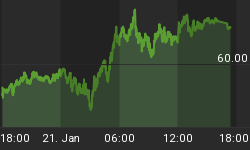Translation of the article for the International Precious Metals & Commodities Fair in Munich, November 6 through 7, 2009.
Since August 5, 1993 there has been systematic intervention in the gold market by American financial institutes with the objective of preventing an increase in the price of gold or at least of mitigating its rise. The intervention is supposed to support the bond market and the dollar as well as ease inflation expectations and the mood of crisis as the case may be. So far these activities have not been officially confirmed, but there is ample evidence of their occurrence. There is only one crucial statement known thus far by then FED-Chief Alan Greenspan where he comes out in favour of influencing the gold price. It has to do with a quote that Greenspan made before a senate committee on July 30, 1998, which in the meantime has become famous among FED observers: "Nor can private counterparties restrict supplies of gold, another commodity whose derivatives are often traded over-the-counter, where central banks stand ready to lease gold in increasing quantities should the price rise." What is notable about this quote is that he refers to the leasing of gold as an instrument for influencing price. Admittedly Greenspan made the comment in a different context (discussions about regulation); talks were not about the framework in which intervention should actually take place.
But there is a second, until now overlooked Greenspan quote, in which he comments on gold price intervention. It came during the FED meeting of May 18, 1993, only about two months before systematic pressuring of the gold price actually began. His statements during that meeting clearly reveal the motives which led to the decision a short time later to intervene in the gold market, because this time the context corresponds. In addition the comments clearly show that Greenspan wants to prevent an increase in the price of gold. For this purpose he unmistakably considers direct intervention!
FED meetings are recorded word for word and the transcripts made public after five years. The quote is contained in one of these very transcripts. Apparently Greenspan spoke informally with his colleague Mullins during the course of the meeting. He reported this conversation to his other colleagues. Greenspan mentions the treasury, since in the USA, only the treasury and not the Federal Reserve can dispose over gold. The market price of gold was increasing at the time. In his unique, somewhat verbose style Greenspan said:
"I have one other issue I'd like to throw on the table. I hesitate to do it, but let me tell you some of the issues that are involved here. If we are dealing with psychology, then the thermometers one uses to measure it have an effect. I was raising the question on the side with Governor Mullins of what would happen if the Treasury sold a little gold in this market. There's an interesting question here because if the gold price broke in that context, the thermometer would not be just a measuring tool. It would basically affect the underlying psychology."
The then FED chief Greenspan himself considers here direct intervention in the gold market! It is clearly about gold sales for the purpose of influencing price. It is not about sales for other purposes (such as managing the reserves), which are announced publicly as reasons for gold sales by the Federal Reserve. Greenspan refers to gold as a "thermometer". He wants to influence its signal effect. If otherwise "thermometer" readings are too high, and the gold price were to suddenly rise in this environment it would fundamentally affect psychology. This quote and the context in which it was made show the main motive for why gold market intervention began a good two months later. It had to do with quelling the signal that would indicate inflation might increase. Against the backdrop of a weak economic environment, the FED was faced with the threat of a continued increase in the inflation rate. An interest rate increase would have weakened the economy further. Central bankers were not clear about the reasons behind the general increase in prices; popular explanations such as a wage-price-spiral were rejected on factual grounds. For this reason they suspected inflation expectations as the driving force behind currency depreciation. The increasing price of gold threatened to magnify those expectations. Intervention in the gold market was introduced so that the "thermometer" would show lower values - and no fever.
Sources:
http://agriculture.senate.gov/Hearings/Hearings_1998/gspan.htm
www.federalreserve.gov/monetarypolicy/files/FOMC19930518meeting.pdf, page 42
Original German version:
http://dimitrispeck.goldseiten.de/
Additional information:
www.gata.org
www.gold-eagle.com/research/speckndx.html















